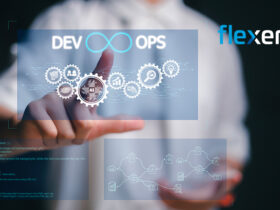Online retail has one key advantage — customer experience. The idea of checkout-free shopping in venues crystalized as Amazon Go, Tesco, Walmart, and many more. But how can any brick and mortar store be actually automated with computer vision systems?
“At its core, computer vision aims at mimicking human sight. So analogically to an eye, CV relies on camera sensors that capture the environment,” mentions Liubov Zatolokina, AI Engineer at MobiDev. From the customer standpoint, such a system represents a similar shopping experience as it is in the online stores, except you don’t need to checkout. However, there might be certain challenges of AI-powered autonomous stores:
- In a crowded store, continuous tracking might be difficult – 100% coverage for cameras must be provided.
- Customers’ shopping process is not linear. It becomes difficult for a model to recognize who took what, and if they actually took the product to buy.
- Some products have minor differences in their look, which makes it harder for the model to fetch all the details.
That’s why partial store automation with computer vision can be more suitable. Let’s examine the steps it takes to create a computer vision system for automation in retail:
- Gathering requirements. First of all we need to understand our business case in detail – preferred automation method, store size, quantity of products for recognition and existing infrastructure.
- Data collection. Computer vision is an artificial intelligence technology. Which means, we need data so it can recognize objects.General recommendations for gathering the data are that it should be as close as possible to how it will look for real users.
- Model training. This process can be split into two tasks – preparing data and choosing an algorithm.
- Model retraining. If any products are added or swapped in the process, the model needs to be retrained. This is because prediction results will differ depending on the data input.
Such systems can be customized to serve the specific needs of a given retailer due to flexibility of machine learning models.
MobiDev is an international software engineering company with offices in Poland and Ukraine.The company is focused on helping visionaries create their products. MobiDev invests into technology research and has years of experience building AI-powered solutions, implementing machine learning, augmented reality, and IoT.


































